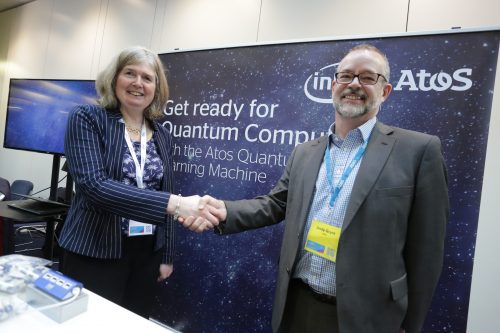
Cyber
e Intelligence sono diventati, con gli anni, due termini strettamente
correlati.
Se
un tempo lo spionaggio e il
monitoraggio di
azioni governative o industriali veniva effettuato in modo diretto,
attraverso l’utilizzo di personale vicino, in senso fisico, al
soggetto di indagine, negli ultimi anni nuove branche di spionaggio e
allo stesso tempo di sicurezza ( trattandosi di due facce della
stessa medaglia) sono venute a crearsi.
Con
OSINT si intende una delle varie metodologie di acquisizione di
informazioni.
Il
termine stesso è composto
da due part, OS e INT. OS è l’acronimo di open source, ossia fonte
aperta, pubblica, le fonti di indagini riguardanti l’OSINT non sono
documenti privati, classificati e non disponibili, ma giornali,
riviste, media e sopra tutti questi, l’internet.
INT
è acronimo di intelligence, quindi informazione. OSINT è la branca
dell’intelligence che raccoglie, analizza e filtra le informazioni
che possono essere reperite da fonti pubbliche.
Il
punto di partenza quando si utilizza l'OSINT
consiste nel
visualizzare correttamente l’obiettivo sul quale si
desidera reperire informazioni. Pensiamo,
per esempio,
all’interesse di una società
nel monitorare i suoi dipendenti con lo scopo di difendere i propri
interessi e segreti industriali.
L'OSINT
può essere impiegato per
monitorare i
software usati dai propri dipendenti, oppure
monitorando le loro ricerche su browser, i
loro blog, le loro attività nei social media, la loro posizione, i
loro indirizzi ip ed altro ancora.
Attraverso
quali strumenti possiamo ottenere informazioni pubbliche ?
Vi
sono numerosi software che ci permettono di monitorare le azioni
online di utenti connessi ad una rete che possono fornire preziose
informazioni, per quanto riguarda invece dati personali, Internet è
una fonte praticamente infinita di informazioni, se si sa dove
cercare.
Motori
di ricerca, social media, giornali online, siti di intelligence,
wayback machine, siti di image sharing, deep web ecc… queste sono solo alcune delle fonti da prendere in considerazione.
La
raccolta di informazioni è solo uno dei passi da effettuare, le
informazioni devono essere analizzate e filtrate al fine di ottenere
un risultato tangibile ed utile ai fini dell’investigazione.
OSINT
è uno dei vari metodi di intelligence, vi sono anche altri metodi
basati su altre fonti di informazione, tra i quali l’Imint (
raccolta di informazione attraverso l ‘analisi di immagini e
fotografie satellitari), l’Humint ( raccolta di dati mediante
contatti con persone), il Techint ( raccolta di informazioni
riguardanti equipaggiamenti militari), Sigint ( raccolta di
informazioni tramite l’intercettazioni di segnali) e Masint
(informazioni provenienti da altre fonti).
Vi
sono numerose società che attraverso l’uso di osint ed altre
metodologie forniscono servizi ed informazioni a corporazioni e
privati, sono le Private Intelligence agencies.
In
Europa, in particolare in Francia vi è la sede di Groupe GEOS che
si occupa prevalentemente di Risk Management per grosse società in
numerosi paesi.
GEOS
Group ha iniziato la sua attività nel 1998
, secondo il loro sito ha un valore di 30 milioni di dollari e
impiega 330
dipendenti e collaboratori.
Un'altra
agenzia di intelligence privata è la Black Cube con sede a Londra,
Parigi e Tel Aviv, fondata da membri dell’ intelligence Israeliano
nel 2010. Nel passato si
è occupata di smascherare numerose frodi e casi di corruzione in
diversi paesi.
Per
quanto riguarda le agenzie italiane, non esiste un albo ufficiale per
cui è difficile rintracciare compagnie che si occupano di fornire
servizi in questo campo, e ancora più difficili da rintracciare in
caso di piccole o medie agenzie.
Vi
sono istituti di ricerca italiani, come l’Alpha institute of
Geopolitics and Intelligence, che si basa su attività Osint ma non
possono essere definite società di intelligence ma fonti su cui
basare il lavoro di intelligence.
Francesco RUGOLO
Immagine: https://medium.com/@z3roTrust/open-source-intelligence-osint-reconnaissance-75edd7f7dada
http://fr.groupegeos.com/
https://www.blackcube.com/
https://www.alphainstitute.it/












